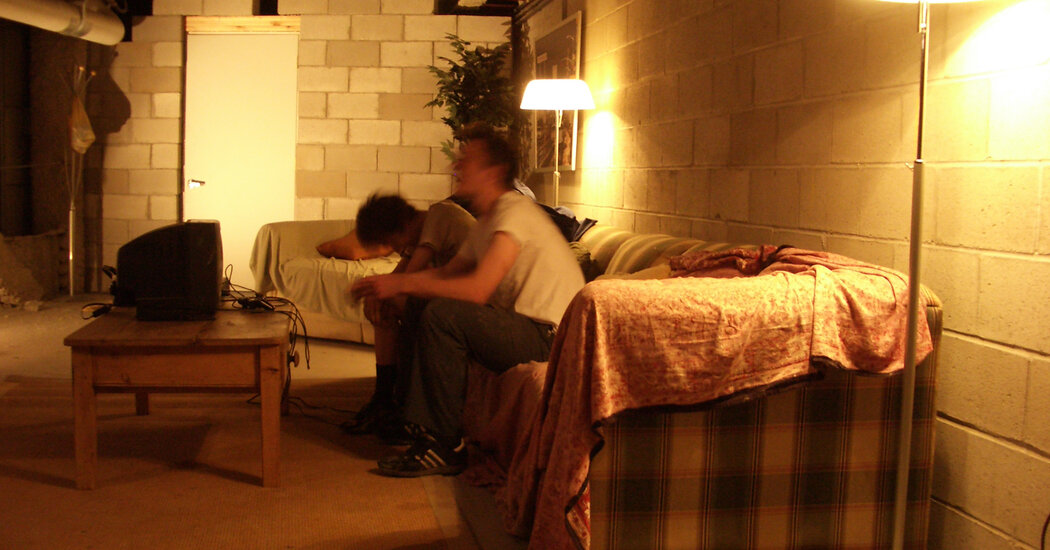Here is the result in plain text:
When the artist Michael Townsend first told the documentarian Jeremy Workman about the time he and his friends lived in a secret apartment tucked inside the Providence Place Mall, Workman thought he was being punked. Then Townsend pulled out a cracked iPad to show Workman some grainy video. “I just was dumbfounded and blown away,” Workman said in a video interview alongside Townsend. “Then I was, like, instantly, ‘I got to figure out how I could convince him to let me make a documentary on this.’
The result is the new film “Secret Mall Apartment,” which recounts how, between 2003 and 2007, eight artists created a homey apartment in an abandoned space in a shopping center. Using footage the residents had filmed on a tiny camera, Workman places the stunt in the context of the rapid gentrification happening at the top of the 21st century while at the same time relying on some heist-movie conventions. So how did they do it? Here are six steps.
1. Find an abandoned space.
2. Get a couch.
3. Build a wall.
4. Get the lay of the land.
5. Abide by the “no outsiders” rule.
6. Believe that anything can be an art project.
In the film, Townsend explains that the initial inhabitants of the mall apartment agreed that the most important thing to get first was a couch. “It was a collaborative project,” Townsend said. “So couches are like the simplest gesture toward collaboration as far as seating goes.”
The most ambitious renovation the artists made to the mall apartment involved building a wall out of cinder blocks so they could erect a doorway and install a door. That meant hauling about two tons of heavy materials up an incredibly steep staircase.
Onscreen, Colin Bliss builds a model of the mall and demonstrates just how they infiltrated it. He explains that there was an entrance from the outside, but that they could also use emergency exits to get to halls that led to the apartment.
That, of course, raises another question. What happened if he had to go in the middle of the night? Townsend, who said in our interview that he would live in the apartment for a couple of weeks at a time, answered the question. “On the personal transparency tip, that wasn’t ever an issue for me.”
As for feeding themselves, they would of course use the food court and movie theater popcorn, but they also had a waffle iron and a hot plate. The year they got caught, Townsend said he had started experimenting with buying groceries at mall restaurants, ordering what he called “whole salads.”
The big rule was to not bring people from outside,” Jay Zehngebot, one of the artists, says in the film. Ultimately, there were eight people who had access to the apartment. If they started bringing in their friends its sanctity would be threatened. Despite being essentially the originator of the project, Townsend broke that rule when he decided to open the apartment’s door to a friend from out of town.
For the mall apartment to exist, it needed to be more than just a prank. Townsend and his compatriots believed in it as an extension of their artistic practices. Not only was it a place to plan their other works, among them a guerrilla 9/11 memorial at sites throughout New York City, but it also existed as an art object in itself. That’s one reasons it lasted so long. “I think there’s definitely a solid vein of intentionality that runs through the whole thing that added to its survivability because we’re taking it so seriously,” Townsend said.
Source link




